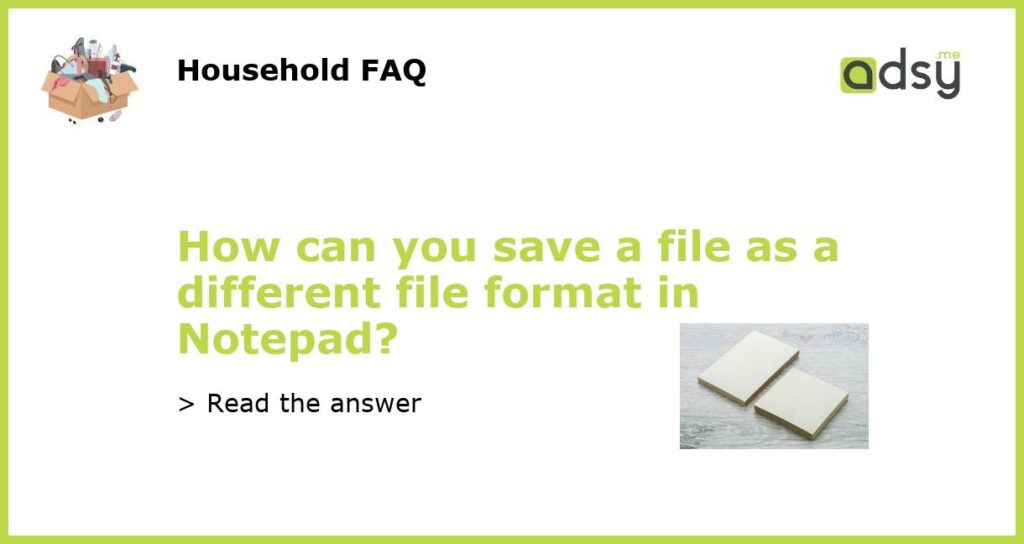Understanding Notepad: A beginner’s guide
First, let’s understand what Notepad is. Notepad is a basic text editor program that comes pre-installed in Windows. It allows you to create and edit plain text files. A plain text file is a file that contains only text without any formatting, such as bold or italicized text.
Saving a file in a different file format in Notepad
If you want to save a file in a different file format, such as HTML or XML, you can do so by following these simple steps:
- Open the file that you want to save in a different file format in Notepad.
- Click on “File” in the Notepad menu and select “Save As”.
- In the “Save As” dialog box, select the location where you want to save the file.
- In the “File name” field, enter a name for the file.
- In the “Save as type” drop-down menu, select the file format that you want to save the file as.
- Click on “Save” to save the file in the selected format.
Using file formats in Notepad
Notepad supports several file formats, including:
- .txt (text files)
- .htm or .html (HTML files)
- .xml (XML files)
- .csv (comma-separated values files)
- .bat (batch files)
- .log (log files)
You can also save a file in other file formats if you have the appropriate software installed on your computer. For example, you can save a file as a .docx (Microsoft Word) file if you have Microsoft Word installed on your computer.
Customizing your files in Notepad
Notepad is a great tool for creating and editing plain text files. By saving a file in a different file format, you can customize your file according to your needs. With the right knowledge and skills, you can create and edit files in Notepad with ease.






